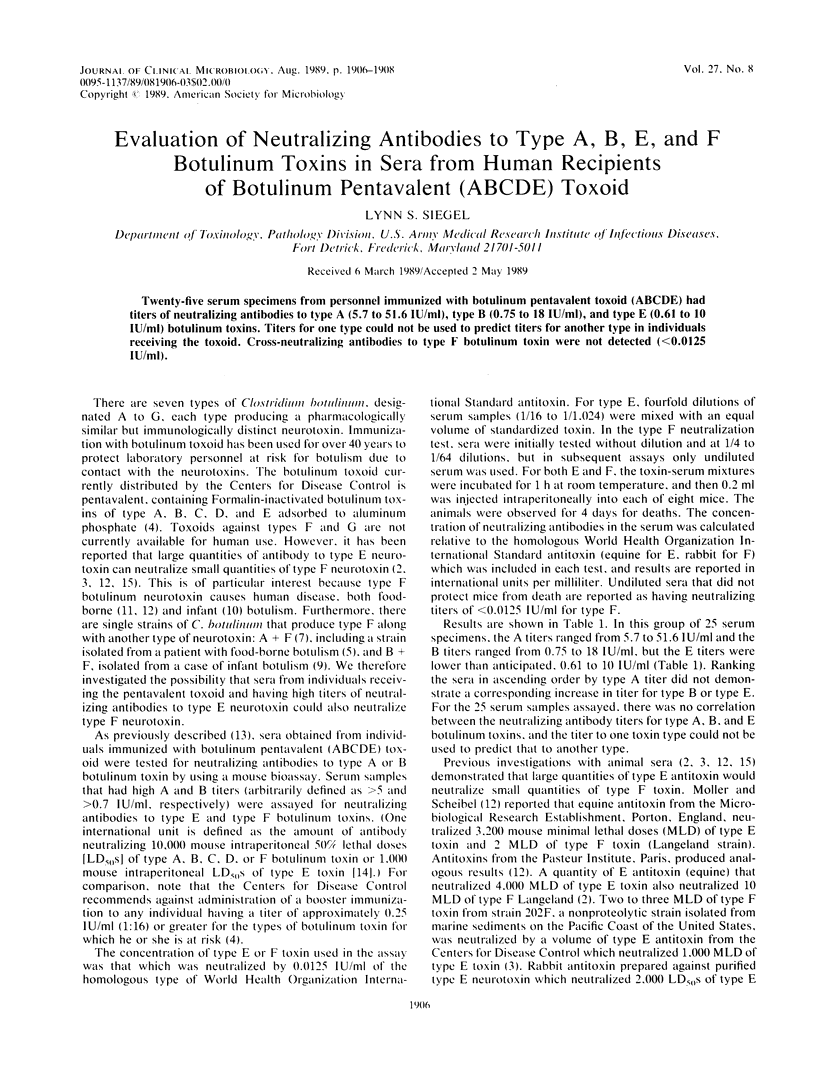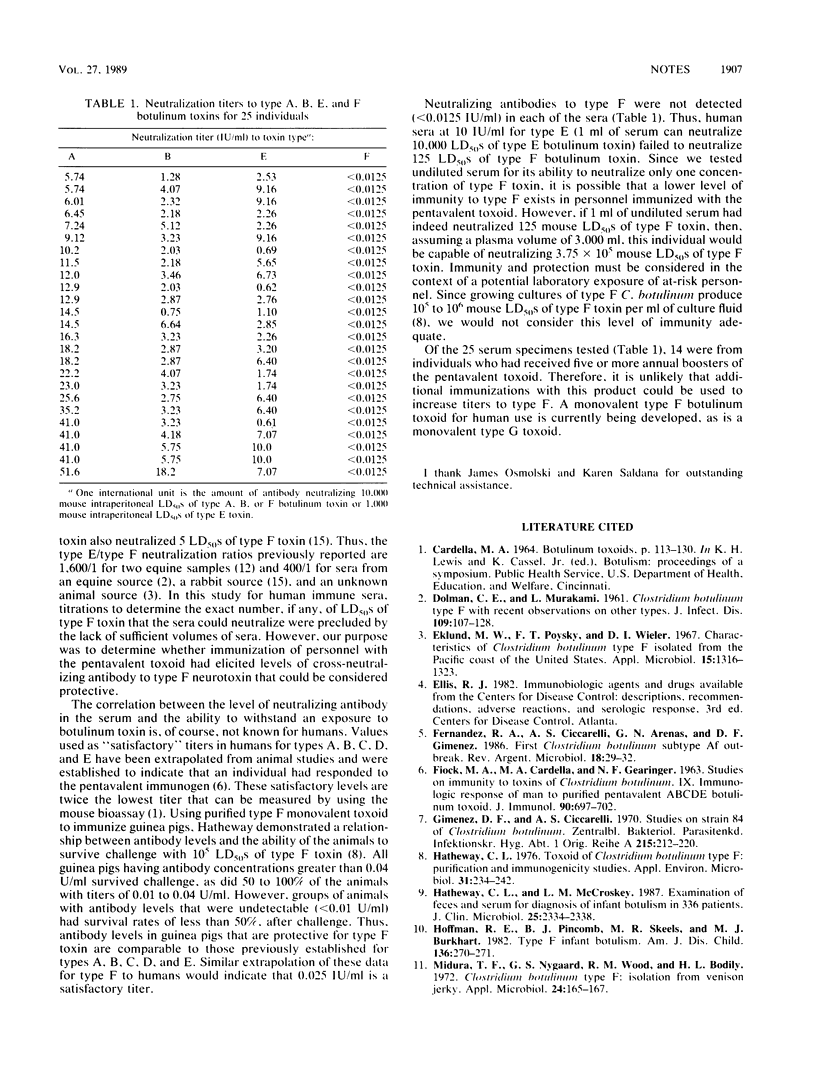Abstract
Twenty-five serum specimens from personnel immunized with botulinum pentavalent toxoid (ABCDE) had titers of neutralizing antibodies to type A (5.7 to 51.6 IU/ml), type B (0.75 to 18 IU/ml), and type E (0.61 to 10 IU/ml) botulinum toxins. Titers for one type could not be used to predict titers for another type in individuals receiving the toxoid. Cross-neutralizing antibodies to type F botulinum toxin were not detected (less than 0.0125 IU/ml).
Full text
PDF


Selected References
These references are in PubMed. This may not be the complete list of references from this article.
- Eklund M. W., Poysky F. T., Wieler D. I. Characteristics of Clostridium botulinum type F isolated from the Pacific Coast of the United States. Appl Microbiol. 1967 Nov;15(6):1316–1323. doi: 10.1128/am.15.6.1316-1323.1967. [DOI] [PMC free article] [PubMed] [Google Scholar]
- FIOCK M. A., CARDELLA M. A., GEARINGER N. F. STUDIES ON IMMUNITY TO TOXINS OF CLOSTRIDIUM BOTULINUM. IX. IMMUNOLOGIC RESPONSE OF MAN TO PURIFIED PENTAVALENT ABCDE BOTULINUM TOXIOD. J Immunol. 1963 May;90:697–702. [PubMed] [Google Scholar]
- Fernández R. A., Ciccarelli A. S., Arenas G. N., Giménez D. F. Primer brote de botulismo por Clostridium botulinum subtipo Af. Rev Argent Microbiol. 1986;18(1):29–31. [PubMed] [Google Scholar]
- Giménez D. F., Ciccarelli A. S. Studies on strain 84 of Clostridium botulinum. Zentralbl Bakteriol Orig. 1970;215(2):212–220. [PubMed] [Google Scholar]
- Hatheway C. L., McCroskey L. M. Examination of feces and serum for diagnosis of infant botulism in 336 patients. J Clin Microbiol. 1987 Dec;25(12):2334–2338. doi: 10.1128/jcm.25.12.2334-2338.1987. [DOI] [PMC free article] [PubMed] [Google Scholar]
- Hatheway C. L. Toxoid of Clostridium botulinum type F: purification and immunogenicity studies. Appl Environ Microbiol. 1976 Feb;31(2):234–242. doi: 10.1128/aem.31.2.234-242.1976. [DOI] [PMC free article] [PubMed] [Google Scholar]
- Hoffman R. E., Pincomb B. J., Skeels M. R. Type F infant botulism. Am J Dis Child. 1982 Mar;136(3):270–271. doi: 10.1001/archpedi.1982.03970390084021. [DOI] [PubMed] [Google Scholar]
- MOLLER V., SCHEIBEL I. Preliminary report on the isolation of an apparently new type of CI. botulinum. Acta Pathol Microbiol Scand. 1960;48:80–80. doi: 10.1111/j.1699-0463.1960.tb04741.x. [DOI] [PubMed] [Google Scholar]
- Midura T. F., Nygaard G. S., Wood R. M., Bodily H. L. Clostridium botulinum type F: isolation from venison jerky. Appl Microbiol. 1972 Aug;24(2):165–167. doi: 10.1128/am.24.2.165-167.1972. [DOI] [PMC free article] [PubMed] [Google Scholar]
- Yang K. H., Sugiyama H. Purification and properties of Clostridium botulinum type F toxin. Appl Microbiol. 1975 May;29(5):598–603. doi: 10.1128/am.29.5.598-603.1975. [DOI] [PMC free article] [PubMed] [Google Scholar]


